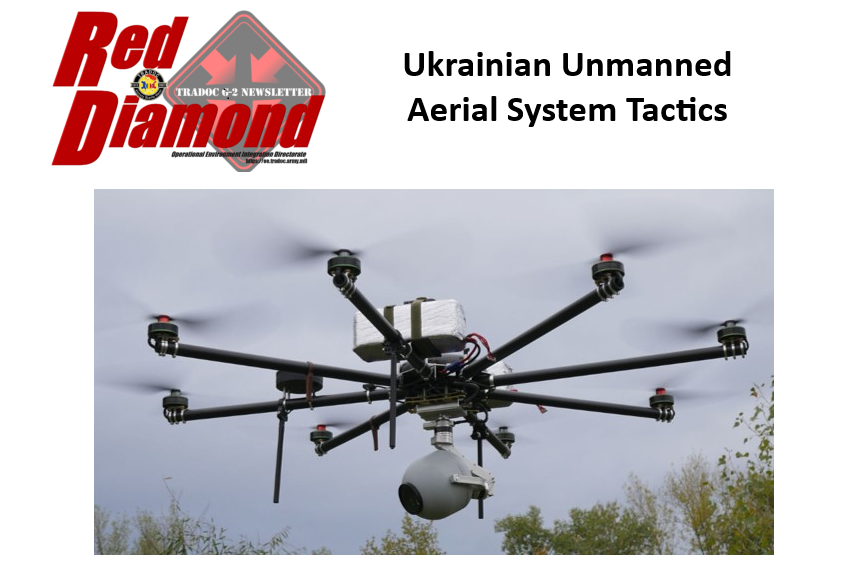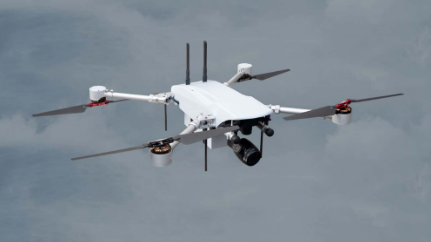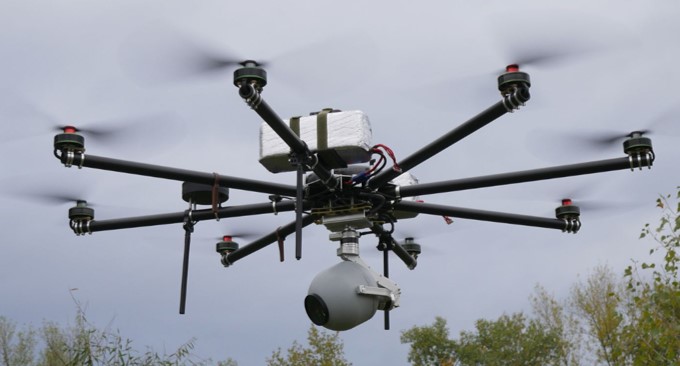
Ukrainian Unmanned Aerial System Tactics
By John M Cantin
Ukrainian UAS tactics and countermeasures have consistently evolved since the commencement of the war in 2014. The Ukrainians have significantly enhanced UAS effectiveness in reconnaissance, targeting support, lethal fires, and battle damage assessments. Ukraine's UAS tactics continually adapt to stay ahead as Russia regularly develops new countermeasures.
In early June 2023, Ukraine launched a counteroffensive to retake lost territory and split Russian forces, requiring the enemy to fight on multiple fronts. After Ukrainian troops made an initial thrust into Donetsk, Russian troops moved into their well-prepared defenses and successfully halted the Ukrainian advance. Since then, the war has devolved into a fight resembling World War I trench warfare rather than the quick victory the Russians expected. Much like WWI, both sides continue to conduct reconnaissance, counter-reconnaissance, and artillery strikes. Unlike WWI, both sides employ unmanned aerial systems (UAS or drones), satellite imagery, and high-speed communication networks. This article describes Ukrainian UAS employment and explores innovations developed in response to Russian counter-UAS efforts.
Russian and Ukrainian Forces have developed UAS tactics and countermeasures since the start of the conflict in 2014. Both sides limited their use of UAS in the Donbas and Crimean areas during the initial phase of the war, primarily conducting reconnaissance and security missions. After Russia’s full-scale invasion of Ukraine on 24 February 2022, UAS use has increased significantly, adding direct action missions and increasing reconnaissance and security missions.
- Reconnaissance: In February 2014, Ukrainian Forces began flying UAS to locate enemy positions, scout routes, identify minefields, and monitor lines of communication (LOCs) in Crimea. As casualties mounted on both sides, the rate of UAS usage increased. Now that the front lines for both sides have become static as of June 2023, counter-UAS methods have evolved from better-camouflaged ground positions to having troops stand watch for UAS to engaging the UAS with small arms and machine gun fire.i As the UAS threat amplified, Ukraine and Russia developed better jammers, high-energy lasers, and spoofers to disrupt or crash an enemy UAS.
- Direct Action: Following the 2022 invasion, UAS took on the role of fires asset. The systems were configured to deliver munitions, return to base, or act as a one-way “kamikaze” weapon. To defeat counter-UAS systems, swarming tactics were developed that employ multiple UAS against the same target or a group of targets.ii Drone footage from 2023-24 shows soldiers from both sides being attacked by individual or multiple UAS. This method has a tactical and significant psychological effect as soldiers sense there is nowhere to hide or seek cover. To counter direct attack drones, Ukraine and Russia have developed countermeasures such as nets and wires that trigger an early detonation, protecting troops and equipment.
- Security: Russia and Ukraine employ UAS as security force multipliers. Both sides use UAS to compensate for personnel shortages. Since incurring massive personnel losses in 2022, Russia increasingly uses UAS instead of soldiers to observe trench lines, minefields, and dead space in some sectors.iii

Figure 1: Russian UAS the ZALA 421-24 (TRADOC G2 WEG)
Ukrainian Forces have developed drone ‘networks’ using a mixture of military UAS, commercial off-the-shelf drones, and civilian communication networks and mobile applications that have had a positive effect on both detection and interdiction of Russian troops and weapons. Allied military advisors have provided training that has increased Ukrainian UAS effectiveness, and the Ukrainian Army has been flexible enough to insert unmanned systems into most of its military operations. The Ukrainians use their UAS primarily for reconnaissance, locating targets, kinetic strikes, and battle damage assessments (BDA).
- Ukrainian forces combine military and civilian drones to successfully locate and identify concentrations of troops, logistics, weapon systems, C2 nodes, road and rail networks, obstacles, and trench complexes.iv UAS have an advantage in that they can go places inaccessible to ground forces. Drones can get closer to targets by flying over obstacles; their small size makes locating and shooting them down tricky. UAS can fly down a street to check for improvised explosive devices, enemy troops or equipment, and trafficability. Drones conduct visual inspections of abandoned or occupied cities and villages to assess the presence of civilians and infrastructure. UAS are also used for BDA on troops and equipment as they can provide rapid assessments of the success or failure of fires. Loitering UAS can remain undetected and provide feedback on the physical and functional destruction of weapons systems and personnel.v

Figure 2: Ukrainian modified commercial drone (TRADOC G2 WEG)
- The Ukrainians have become adept at identifying targets in near real-time for artillery or drone strikes and quickly getting the information to units that can attack or continue to monitor the target. Ukrainian troops have developed an ad hoc network of handheld radios, cell phones, computers, and conventional military communication systems. This communications network is continually updated and adjusted to counter Russia’s ability to intercept civilian and military networks.
- UAS are used to deliver kinetic strikes using drones that can return to base or one-way attack munitions. The Ukrainians have adapted and modified munitions for both one-way and returning drones.vi One tactic is to use one drone to find and identify targets and then strike the target with one-way attack munitions while the other drone looks for more targets or returns to base. Targets can be engaged with one precision munition or several smaller ones, depending on target size and composition.vii
- Ukraine is integrating drones, communications, and layered overlapping coverage plans into its attack and defense plans. Drones have become an essential element in Ukrainian operations. Following Soviet Army doctrine, Ukraine and Russia have integrated air defense and UAS at the platoon level. Ukraine has also established training for unmanned system operators, using both Army and territorial units. Most operators can be trained to be proficient in five days. Once these Soldiers are trained, they are sent to frontline units. Ukraine also utilizes territorial units and locally organized militias that can monitor Russian units and territory, operating in small, mobile teams.
- The Ukrainian Army will likely continue to adjust and adapt its drone employment and tactics to counter Russian attacks. In the coming months, we can expect to see more drone tactics innovation as the war continues. The Ukrainians have become adept at adjusting, adapting, and upgrading various drone systems and techniques. Out of necessity, they have cobbled together an elaborate and effective air defense network using multiple military, civilian, and modified systems. This system will continue to evolve as the war goes on.viii
Implications for the U.S. Army
- The U.S. Army will most likely be supporting or fighting alongside Allies that may use commercial and military drones that are incompatible with U.S. Army systems. U.S. Forces will have to be flexible and adaptive to support their Allies. One can envision a scenario where commercial systems identify or confirm targets engaged by U.S. military systems. U.S. Army Soldiers should be prepared to adjust to unfamiliar, non-military systems and approaches.
- Anything the U.S. Army or Allies can construct using commercial off-the-shelf materials in conjunction with military systems is vulnerable to countermeasures. Russia has been developing counter-UAS measures and systems to stem the number of attacks on their troops. Ukrainian forces have been improving counter-jamming and electronic warfare (EW) capabilities that support remote operations. U.S. Forces must also be prepared to support Allies with EW and signals intelligence (SIGINT) if requested.
- The U.S. Army may face an enemy that uses the same tactics as Ukraine. U.S. forces need to be familiar with drone employment and the use of commercial and military UAS systems. Future adversaries, even non-state actors, may use small commercial drones to conduct reconnaissance, spot for artillery, and attack U.S. Army troops. When Army staffs plan for enemy drone activity, they should factor commercial systems into their planning.
- Enemy forces can communicate using non-military means (e.g., cell phones, tablets, gaming systems, etc.). Civilian communications and networks need to be considered in military planning. Previously, militaries and governments had exclusive access to satellite imagery, secure communications, and near real-time information sharing; this is now available commercially to any threat group. This access to technology and information exponentially improves enemy forces’ ability to observe and attack U.S. Forces.
Notes
_______________________________________________________
[1] Cotovio, Vasco, Frederik Pleitgen, William Bonnett, and Daria Markina Tarasova. 2023. ‘From Ukraine with love:’ The elite night-time drone units bombing Russian military. June 16. https://www.cnn.com/2023/06/16/europe/ukraine-drone-night-strike-russia-intl-cmd/index.html
[1] Axe, David. 2023. There Are So Many Explosives-Laden Drones Flying Over Southern Ukraine That They’re Running Into Each Other. August 28. Accessed August 6, 2024.
[1] Ankel, Sophia. 2023. Why Russia’s defenses are so effective: Deep minefields, adaptable drones, and electronic warfare are proving formidable in Ukraine, experts say. August 02. Accessed August 06, 2024. https://www.businessinsider.in/international/news/why-russias-defenses-are-so-effective-deep-minefields-adaptable-drones-and-electronic-warfare-are-proving-formidable-in-ukraine-experts-say-/articleshow/102356159.cms.
[1] Franke, U. (2023, August 11). Drones in Ukraine and beyond: Everything you need to know. Retrieved from European Council on Foreign Relations : https://ecfr.eu/article/drones-in-ukraine-and-beyond-everything-you-need-to-know
[1] Simon, S. (2023, August 5). How the use of drones in Ukraine has changed war as we know it. Retrieved from NPR: https://www.npr.org/2023/08/05/1192343968/how-the-use-of-drones-in-ukraine-has-changed-war-as-we-know-it.
[1] Euronews. (2023, June 6). How drones are conquering the battlefield in Ukraine’s war. Retrieved from Euronews: https://www.euronews.com/2023/06/06/how-drones-are-conquering-the-battlefield-in-ukraines-war
[1] Sherman, J. (2023, April 3). Drone-on-Drone Combat in Ukraine Marks a New Era of Aerial Warfare. Retrieved from Scientific American: https://www.scientificamerican.com/article/drone-on-drone-combat-in-ukraine-marks-a-new-era-of-aerial-warfare/
[1] Gonzalez, R. J. (2023, February 23). Drones over Ukraine: What the war means for the future of remotely piloted aircraft in combat. Retrieved from The Conversation: https://theconversation.com/drones-over-ukraine-what-the-war-means-for-the-future-of-remotely-piloted-aircraft-in-combat-197612
Distribution A: Approved for public release
Categories:
Tags:
Ukrainian Unmanned Aerial System Tactics
By John M Cantin
File Size:
391KB
File Type:
Page Count:
5

